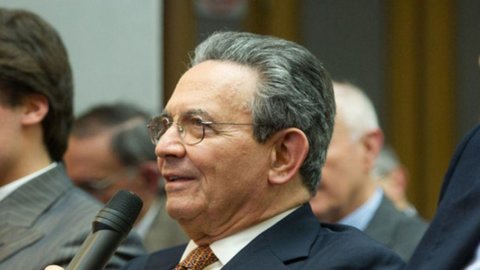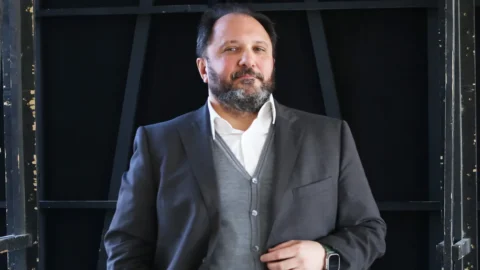From the 80s and 90s we have memories of sovereign debt crises that afflicted developing economies. Today we have the first of the developed countries in modern times; it mainly affected the southern band of the Eurozone and the acronym PIIGS, despite the strenuous attempts not to include the I of Italy, has become sadly known. The AIAF document summarizes the association's point of view on very important issues such as the strengthening of European institutions, an appropriate constitutional framework for them, the issuance of public debt by the Union. I fully agree with many of these positions, especially those calling for progress in the construction of Europe.
Today, however, I will mainly focus on one of the four objectives that the AIAF underlined in outlining "the Italian case": "the aggression against the public debt" with a shock therapy to achieve a strong reduction of the debt. However, I will not neglect another one, the "relaunch of economic growth" with structural reforms that concern liberalization, the labor market, social safety nets, education, taxation, legality and… institutions.
In the general scheme envisaged by the European Union, in twenty years the Italian public debt of 1.900 billion euros, equal to just over 120% of GDP, it must be halved. Of course, there is no guidance on how to achieve this. The AIAF correctly makes an inventory of the measures on which it can rely: a) improvement of the primary balance, through the further reduction of public expenditure or the increase of taxation; b) increase in economic growth; c) disposals of public assets; d) temporary tax interventions on private assets.
Raising the tax burden is virtually impossible and the reduction of public expenditure, after having tackled the problem of pensions, has little margin in the field of social expenditure, which will inevitably increase if we have to put a hand on the social safety nets.
With regard to the growth, the "sheets" of liberalizations which the Monti government has induced due to European pressure will only be able to produce effects in the medium term, that is, when behaviors (not rules!) will favor competition, which the Italian system has always been reluctant to adopt, over the coalition of interests.
The current program of disposals of public assets (about five billion euros a year) appears altogether insufficient necessary on the one hand and almost impossible to achieve on the other.
The fourth hypothesis is centered on a tax levy, temporary on private assets, with immediate effects on the amount of debt; its political, economic and social acceptability requires an in-depth analysis which can only be partial here. My preference does not go to an extraordinary tax to be paid in ten or twenty years, but to a tax of 300 (or 500) billion to be collected in three (or five) years. In this approach I feel deeply Ricardian.
Even the Monti government is trying to follow the liberal recipes of reducing state interference in the economy and affirming the principles of free trade. However, our financial situation remains extremely tense and open to every wisp of doubt about the country's ability to make a long, grueling march under the leaden sky of recession in search of the holy grail, a debt-to-GDP ratio of 60%.
The remaining alternative, in the presence of excess debt and refusal of default, and the deleveraging of sovereign debt through an extraordinary tax on wealth whose proceeds are used to reimburse a substantial portionsay, a quarter of the debt over, say, three to five years. This is the Ricardian recipe on which I lingered previously. My version, in truth, is less harsh since it aims not at eliminating the public debt as Ricardo intended but at its substantial reduction, however insufficient to achieve the final goal of 60% in the debt/GDP ratio.
Faced with such an extraordinary showdown, in order to regain credibility, the markets should react by acknowledging our reliability through the reduction of the risk premium and the return of more adequate levels of rating (assuming that the latter should still be given weight). Furthermore, only a substantial reduction in the risk premium demanded by the markets from the State can have a positive impact on the funding of the banks and contribute to the escape from the recession.
For Italy, such a decision would have a rebalancing effect: a) of the financial structure, since it would reduce public debt and in all probability increase private debt to pay the tax; b) the patrimonial consistency of households; c) of the growth rate, which it tends to fall when the debt/GDP ratio exceeds the critical level of 85-90 per cent.
Although the Ricardian recipe met in Parliament of Westminster irony and skepticism, it is to be hoped that almost two centuries later our Parliament will be able to give in-depth and interested attention to this option, which in order to be truly credible should involve a delegation of supervision to an EU body regarding the collection of the extraordinary tax and its full allocation to the repayment of the sovereign debt.
Could such a delicate project be launched today, a year and a half before the elections, while a public health majority supports the Monti government, wanted by President Napolitano? Maybe not, but a strong shock in terms of public debt is urgently needed. After listening to my recipe, those who remained skeptical can well conclude with Horace: Aut insanit homo, aut versus facit (Satirae, II, 7).
To learn more Download the full text below.
Attachments: Homeopathic cure for public debt.doc





